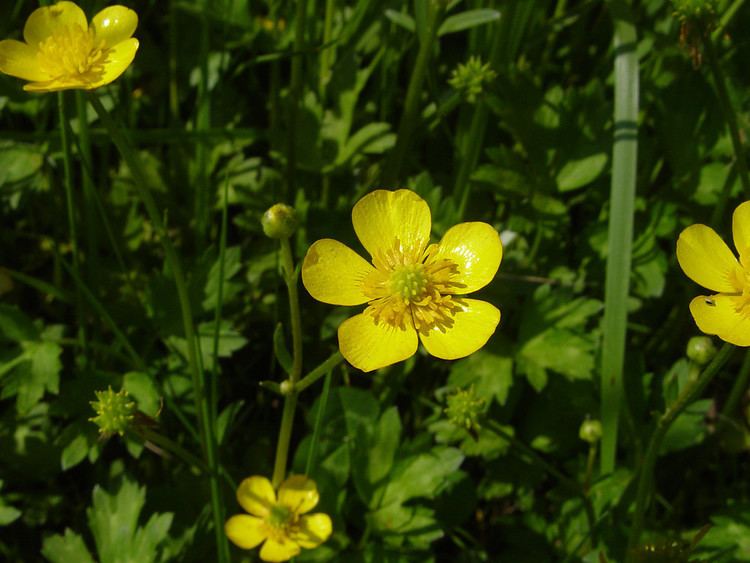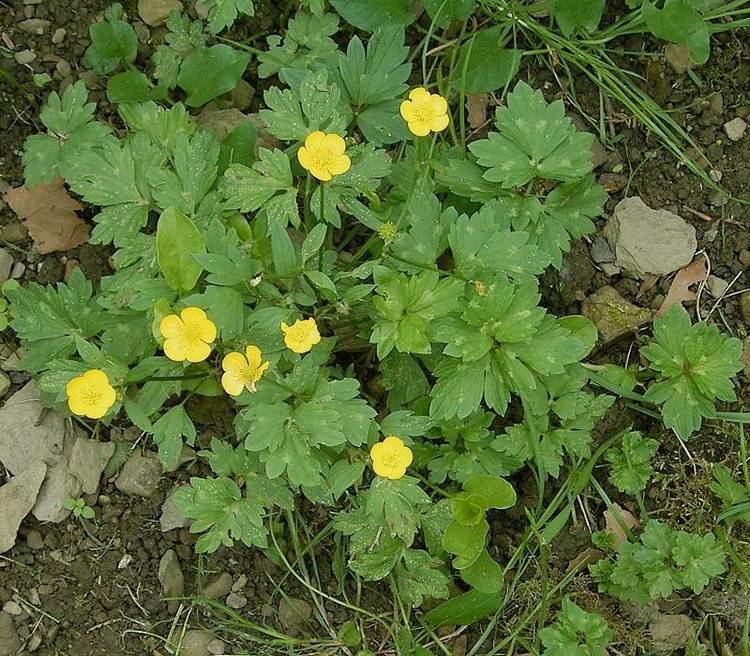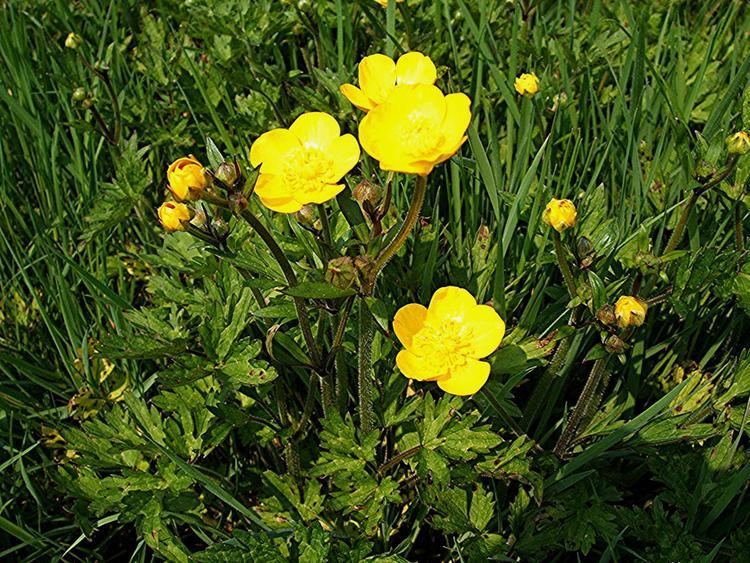Rank Species | Genus Ranunculus Higher classification Buttercup | |
 | ||
Similar Buttercup, Meadow buttercup, Ranunculus bulbosus, Ranunculaceae, Ranunculus flammula | ||
Ranunculus repens creeping buttercup
Ranunculus repens, the creeping buttercup, is a flowering plant in the buttercup family Ranunculaceae, native to Europe, Asia and northwestern Africa. It is also called creeping crowfoot and (along with restharrow) sitfast.
Contents
- Ranunculus repens creeping buttercup
- Creeping buttercup ranunculus repens from kashmir india
- Description
- Habitat
- Cultivation and uses
- References

Creeping buttercup ranunculus repens from kashmir india
Description
It is a herbaceous, stoloniferous perennial plant growing to 50 cm tall. It has both prostrate running stems, which produce roots and new plants at the nodes, and more or less erect flowering stems. The basal leaves are compound, borne on a 4–20 cm long petiole and divided into three broad leaflets 1.5–8 cm long, shallowly to deeply lobed, each of which is stalked. The leaves higher on the stems are smaller, with narrower leaflets and may be simple and lanceolate. Both the stems and the leaves are finely hairy. The flowers are bright golden yellow, 2–3 cm diameter, usually with five petals, and the flower stem is finely grooved. The fruit is a cluster of achenes 2.5–4 mm long. Creeping buttercup has three-lobed dark green, white-spotted leaves that grow out of the node. It grows in fields and pastures and prefers wet soil.
Habitat
In Ireland: very common in damp places, ditches and flooded areas.
Cultivation and uses

Creeping buttercup was sold in many parts of the world as an ornamental plant, and has now become an invasive species in many parts of the world.

Like most buttercups, Ranunculus repens is poisonous, although when dried with hay these poisons are lost. The taste of buttercups is acrid, so cattle avoid eating them. The plants then take advantage of the cropped ground around it to spread their stolons. Creeping buttercup also is spread through the transportation of hay. Contact with the sap of the plant can cause skin blistering.
